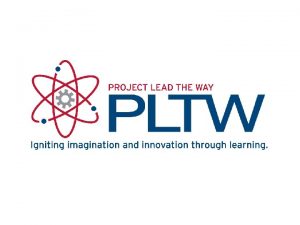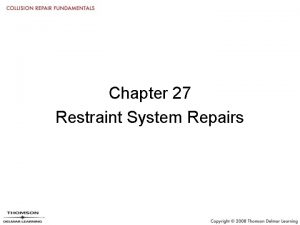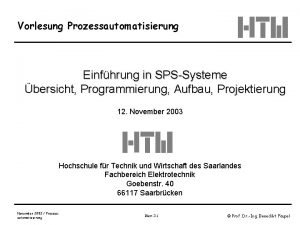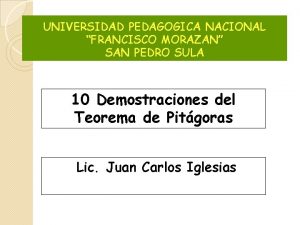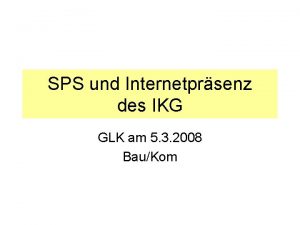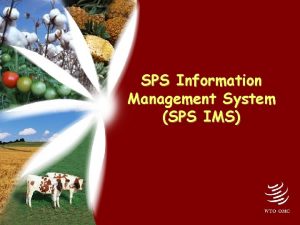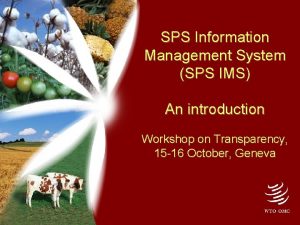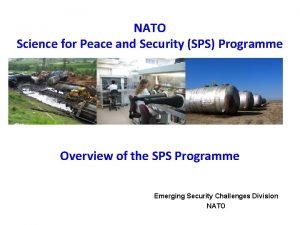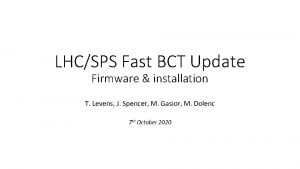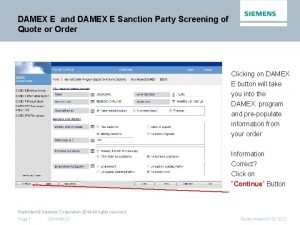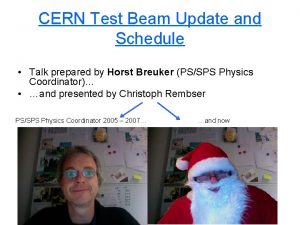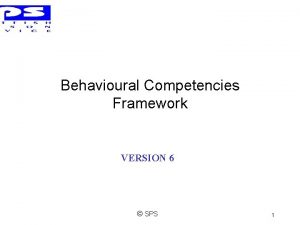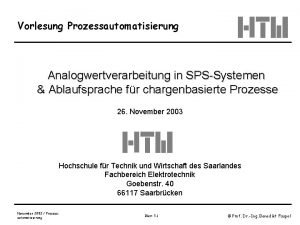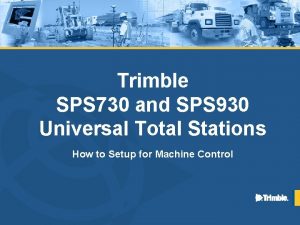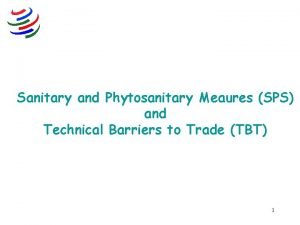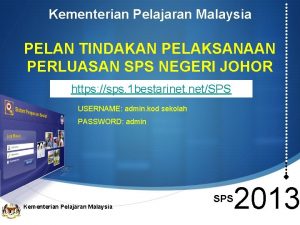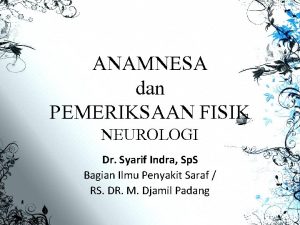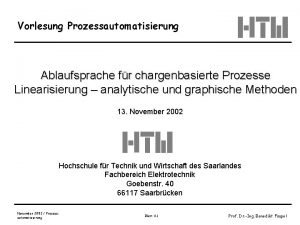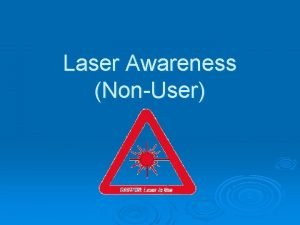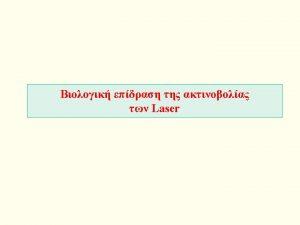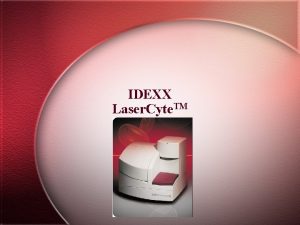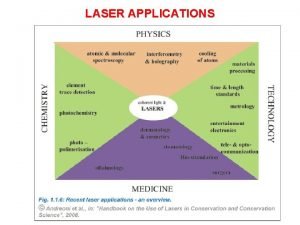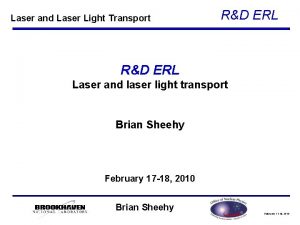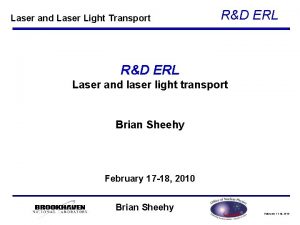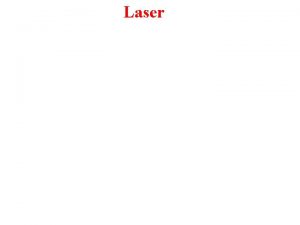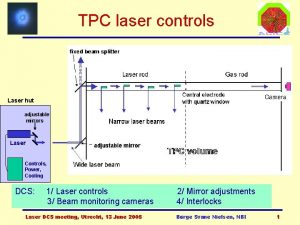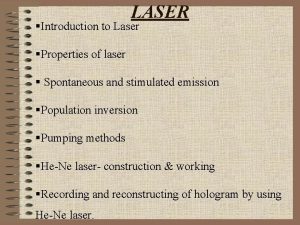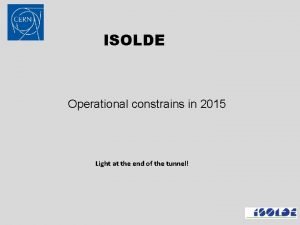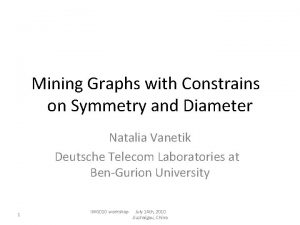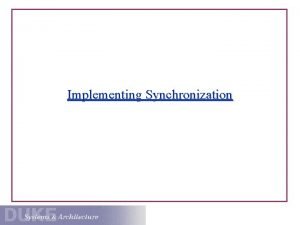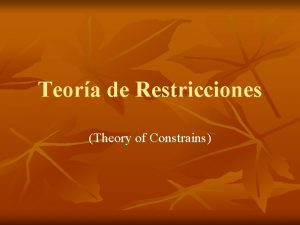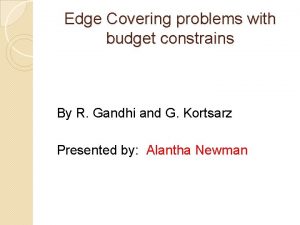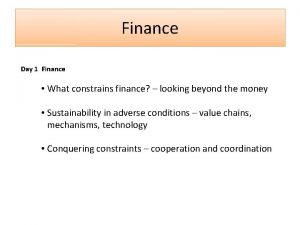Constrains on Laser system implementation in the SPS























- Slides: 23

Constrains on Laser system implementation in the SPS tunnel Gamma Factory Meeting Faculty of Physics, Astronomy and Applied Computer Science Jagiellonian University Krakow, Poland 28– 30 January 2019 By Valentin Fedosseev (CERN, EN department)

Requirements for laser installation General requirements: • • • Space for laser, optics, diagnostics, other electronic devices Electrical power Laser cooling => autonomous water circuit preferable Temperature stability => typically better than +/- 1° C Air purity => typically ISO 7 or better Class 4 laser safety => Designated Laser Area with access controls + enclosed beams outside DLA (Class 1) Specific requirements: • • Synchronization to the machine timing Integration into the CERN control system

Interaction regions in SPS rings Starights ections LSS 4 and LSS 6 were considered

Straight section LSS 4 Passage should be left free for transport. Practically no space for laser installation next to the beam line. LSS. 416 30 m

Straight section LSS 4 Could it be possible to place the laser in neighbouring areas? 10 m

Straight section LSS 6 LSS. 616 30 m Tunnel is larger

Straight section LSS 6 LSS. 616 Space behind the beam line looks free

SPS Radiation Survey Results Measurements taken after 30 hours of cool-down: - 2017 Physics run (protons) from 8 th May 2017 to 23 th Oct 2017 - 2016 Physics run (protons) from 11 th Mar 2016 to 14 th Nov 2016 Measurements taken after 2 months of cool-down - Jan 2018 • PCMx probe SAPHYMO (plastic scintillator – 200 cm 3) • Distance ≈ 1 m from beam line • All along the 7 km of the SPS Ring (≈ 18000 measurements). • Labview registration application • Survey usually performed after 30 hours of cool-down Measuring probe Plastic scintillator Vol: 200 cm 3

SPS Radiation Survey Results

SPS Radiation Survey Results

SPS Radiation Survey Results

SPS Radiation Survey Results For access after 30 h cool-down: None of the two areas is particularly problematic. However, both areas have some small areas with higher dose rates.

Latest Radiation Survey made on 18. 12. 2018 LSS 6 looks slightly better regarding the radiation emitted by beam line equipment

Radiation on Electronics measurements Performed by EN/SMM-RME (EDMS document 2080251) •

Radiation on Electronics measurements Position of detectors in LSS 4 Position of detectors in LSS 6

Radiation on Electronics measurements Number of SEU detected by each Bat. Mon pair Long Straight Section Position Height SEU 3 V SEU 5 V A Beam 20963 10498 B Floor 10351 1177 E Beam N/A 17577 F Floor 20181 N/A LSS 4 LSS 6 Summary of the fluences and the R factor measured Long Straight Section LSS 4 LSS 6 Position Height R-factor A B E F Beam Floor 0. 1 1. 9 0. 1* 1. 9* ΦHEH [pp/cm 2] 8. 88 x 109 8. 80 x 108 1. 50 x 1010 2. 04 x 109 ΦTh. N [pp/cm 2] 8. 30 x 108 1. 64 x 109 1. 40 x 109 3. 81 x 109

Radiation on Electronics measurements Summary of the measured TID for each position Long Straight Section LSS 4 LSS 6 Position Height TID [Gy] A Beam 10. 5 B Floor 4. 8 C Beam 5. 4 D Floor 3. 9 E Beam 9. 8 F Floor 4. 0 Further data analysis and implications for electronics will be performed by EN/STI-BMI

Comparison with AWAKE conditions No visible influence of proton beam on the devices Fluka simulation by HSE-RP Laser room UV beam diagnostics Streak camera Simulation Parameters: • 3 x 1011 p+/bunch • 1 shot every 30 s • 400 Ge. V • Experimental runs: • 4 weeks per run • 2 runs per year • Annual intensity: 4. 8 x 1016 Digital cameras SEUs regularly detected during proton beam time

Synchronization to the machine timing Phase stability conditions of the laser-ion interaction •

Synchronization to the machine timing AWAKE example (for 400 Ge. V protons) H. Damerau et al. , “RF Synchronization and Distribution for AWAKE at CERN” - in Proceeding of IPAC 2106 [THPMY 039]

Laser beam control and diagnostics At CERN the accelerator control system is based on the Real-time FESA (Front-End Software Architecture) framework. => FESA classes are required for laser beam elements • Motorization of laser mirrors, translators and other movable elements • Laser shutters and dumps • Laser power/energy meters • Acquisition of laser beam images

Summary • Location for laser installation should fulfil certain requirements • Space • Air quality • Temperature stability • Safety (enclosure) • IR location at LSS 6 offers some space near the beam line, where a laser installation could be placed, • The residual radiation conditions in both locations are acceptable for human work during the no-beam periods • Risks of laser electronics damage by HEH and thermal neutrons shall by analysed by experts. A qualified advice on possible shielding is expected • Laser synchronization is a separate task to work out. • Control of laser beam elements and diagnostics should be designed in accordance with CERN standards.

Active. Fiber. Systems. Gmb. H(AFS)islocatedin. Jena, knownasthe“cityofphotonics”in. Germany. Asa spin-offfromthe. Fraunhofer. IOFJenaandthe. Instituteof. Applied. Physicsattheuniversityof. Jena. AFS representstheexpertiseofinnovativesolid-state-laser development.
 List three of the commonly used assembly constraints
List three of the commonly used assembly constraints Passive laser restraint system
Passive laser restraint system Selbsthaltung sps fup
Selbsthaltung sps fup Universidad pedagogica sps
Universidad pedagogica sps Isolde kurz gymnasium reutlingen
Isolde kurz gymnasium reutlingen Sps ims
Sps ims Sps ims
Sps ims Sgs.upm
Sgs.upm Sps program
Sps program Bibct
Bibct Damex sps
Damex sps Cern testing schedule
Cern testing schedule Sps behavioural competency framework
Sps behavioural competency framework Analogwertverarbeitung
Analogwertverarbeitung Trimble sps 730
Trimble sps 730 Sps roadmap
Sps roadmap Sps principles
Sps principles Sps barriers
Sps barriers Sps kpm
Sps kpm Sps t
Sps t Dr syarif indra sps
Dr syarif indra sps Ablaufsprache beispiel
Ablaufsprache beispiel Mendels sps
Mendels sps Sps intranets
Sps intranets
